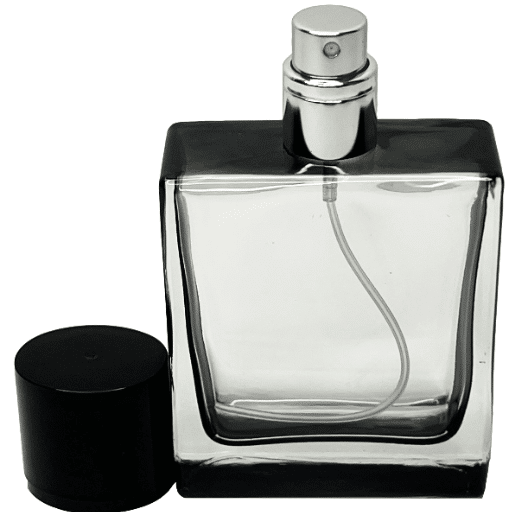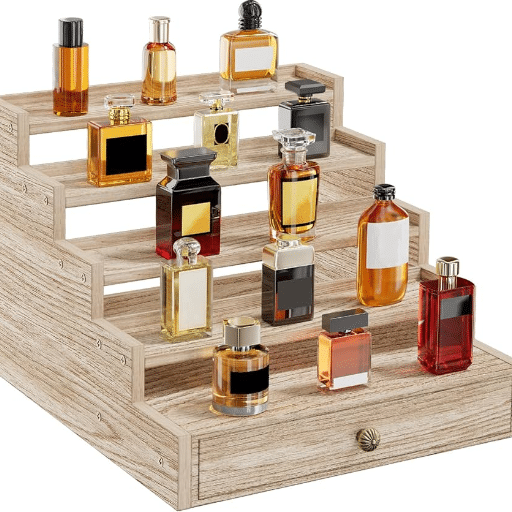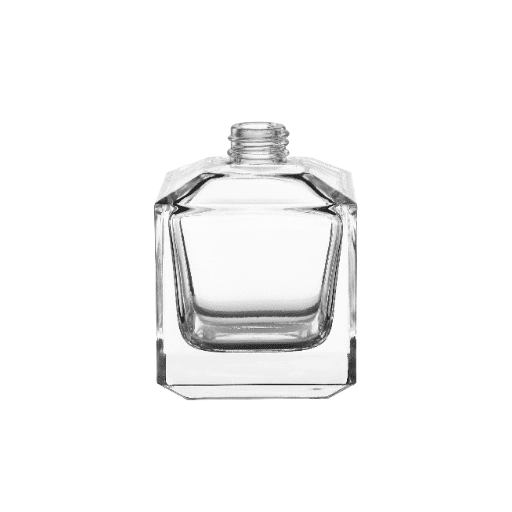When it comes to perfumes, everyone wishes to own one and blazing signature that reveals their personality and exudes sophistication. Unfortunately, there are a lot of perfumes that do not meet the required standards of quality and can be very dangerous to a person’s health. Identifying fake perfumes is a challenging task, especially for well-known brands. In this article, we will share with you seven reliable ways to check if a perfume is real. We will discuss elements from its packaging to it’s composition that will enable you to purchase genuine fragrances instead of being a victim of fraud. These expert tips will ensure the protection of your investment in high-end perfumes.
What are the warning signs of counterfeit perfume?
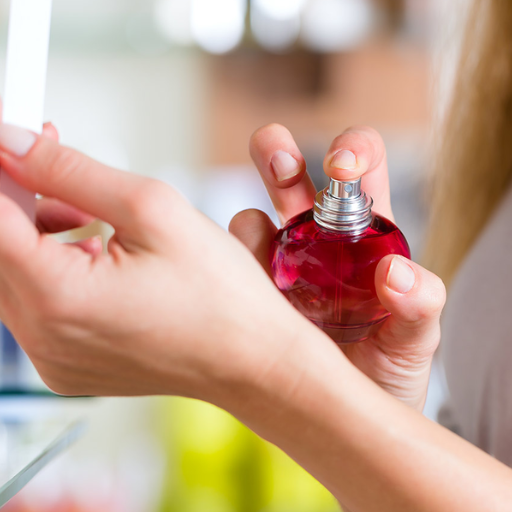
- Low-Quality Packaging
Authentic perfumes have sleek packs which contain high-end material with details such as text that is clearly printed. Fake perfumes usually use cheap materials and their branding is subpar as well which leads to inconsistent fonts and even misspellings.
- Poor Bottle Design
Fake perfumes tend to have poorly designed bottles which leads to sloppy edges and unmatched labels whereas real perfumes boast carefully polished bottles free of rough edges and unsmooth surfaces.
- Suspicious Pricing
Like most other products, a price that seems too good is usually bad. Genuine luxury perfumes have set prices that would almost never be slashed too. If they are set at an unusually low price, chances are the product is fake.
- Off-Color or Cloudy Liquid
Any authentic perfume should possess a clear liquid with no residues. Any cloudiness along with discoloration will be evidence to a fake product.
- Weak or Unpleasant Scent
Counterfeit fragrances mimic original perfume bottles, but their ingredients are of low quality, yielding scents that are weak, overly harsh, or completely different.
- Lack of Serial Numbers or Barcodes
Real perfumes usually bear a batch or serial number on their boxes which is repeated on the bottle. These fakes do not have numbers, or their numbers do not match.
Common red flags that indicate a perfume is fake
1. Unusual Packaging
If the perfume is genuine, the packaging should be of high quality along with other distinctive markers such as sharp fonts, high-quality spelling, and graphic design. If it is a counterfeit product, the perfume will be poorly packaged containing blurred logos, unevenly cut boxes, and misspellings. In addition, genuine boxes are crafted from stronger materials and the cuts are exact so that the bottle is snugly protected.
2. Incorrect or Missing Logos
The brand logo on authentic fragrances is of the same design and placement. Fake perfumes tend to use logos with slight modifications in font, size, or even orientation due to copying.
3. Cloudy or Discolored Liquid
Cloudy or uneven liquid fillings for perfume are non-genuine. Genuine perfumes are purely free of water and contain clear liquid while in the bottle. For a reliable check, hold the bottle up to the light.
4. Too-good-to-be-true Pricing
Lower-than-usual costs for brand perfumes and greatly reduced prices for items are strong pointers to counterfeiting and fraudulent behavior. Genuine items have set prices in all authorized stores so if significant price cuts are offered, expect counterfeiting.
5. Tester Bottles Being Sold as Originals
Brands do produce authentic tester bottles, however they are not meant for resale. If a seller brags about having bulk tester bottles ready for sale at a discount, then it’s likely it’s a counterfeit.
6. Fast-Fading Fragrance
Original perfumes are designed to retain their projection and scent strength for an enduring period. If the fragrance dissipates within a few minutes or an hour, it indicates that the components of the duplicate product were poorly crafted.
7. Poor Quality Workmanship of the Bottle
Genuine designer perfumes have their bottles constructed elegantly. Each detail is smooth, the seals are tight, and the bottles fit snugly. Counterfeit goods, on the other hand, have caps that are too loose or too tight. The spray nozzle may be out of alignment and surfaces may not be smooth resulting in poor design.
It is with such various elements that clients can guard themselves from fake perfume products which will guarantee that they are purchasing real, high-end perfumes.
How Packaging Inconsistencies Reveal Counterfeit Fragrances
Established brands spend a lot of resources on packaging because it helps ensure the authenticity of their product. The packaging of counterfeit perfumes are of poor quality and lack precision. For example, perfume boxes are made out of high-quality and robust materials that are printed on with great precision. The letters of the words printed are sharp without any stitching or grammatical errors unlike those printed on counterfeit products where the words are blurry and filled with errors.
A different aspect that is critical regards the adhesives and seams of the packaging. The boxes of genuine perfumes are perfectly sealed with sharp edges and clean surfaces showing no irregularities. Counterfeit packaging has poorly designed edges and unsightly glue marks which stands in stark contrast to the sleek imaginations depicted by luxury brands.
Moreover, authentic products feature barcodes and serial numbers for identification purposes so these features can be easily marked on counterfeited products. Counterfeit items are often missing these marks or have inconsistent ones that do not follow logical standards set by the brand. Research shows that a large portion of consumer complaint data states that many cases of counterfeit perfumes are identifiable through faulty packaging, ranging anywhere from 30-40% of them making this a key focus of scrutiny.
By analyzing factors such as the quality of materials, the degree of precision in the printing, and the accuracy of the external seals, buyers can better distinguish between genuine and fake fragrances, confirming that their acquisitions correspond to what reputable brands promise.
How can I spot fake perfume by examining the bottle?
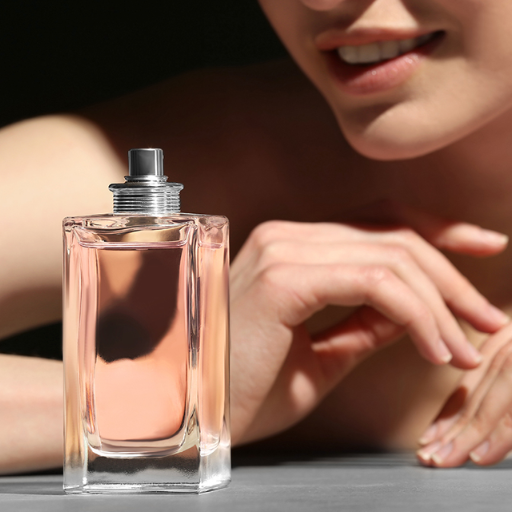
1. Check the Glass Quality
Real perfume bottles are crafted from smooth glass, of high quality, free from bubbles or other imperfections. Counterfeit bottles cut corners, leaving them with rough edges, uneven surfaces, and visible flaws.
2. Look at the Label
The spell-checked and sharp text should also be displayed on the bottle. Genuine perfumes contain exact printing, blurring and spelling errors on labels is a clear indication of fake perfumes.
3. Look at the Cap and Sprayer
A real perfume will have a cap and sprayer that both fit and function seamlessly. Counterfeit versions tend to use cheap materials and plastic which makes them flimsy and improperly fit.
4. Weight and Balance
Balance and weight are key characteristics when dealing with authentic bottles as they feel solid. Fakes tend to cut corners which makes them feel off-balance and light.
Inspecting perfume bottle quality and craftsmanship
Considering the quality and craftsmanship of a bottle, one must pay attention to the material first, authentic bottles are composed of thick, durable glass. Cutting corners means the brand lacks trust in their products meaning those bottles wouldn’t go through quality checks. Quality assurance ensures that glass is lacking flaws such as seamless bubbles and imperfections. Correctly the edges of glass should be smooth and the seams where glass is joined should not show signs of bubbling or imperfections.
The labels of authentic perfume bottles are printed with a sharp and clean font of uniform size. They must adhere to the design of the bottle without any blurring or disproportionate spacing, with no smudging or sign of misalignment. Moreover, any embossing and engraving that may be present is well defined and polished which is indicative of good craftsmanship.
Examine the metallic parts of the bottle including the collar, base, and nozzle. Authentic perfume bottles will use metals that are beautifully polished and resistant to corrosion, maintaining their elegant look over the years. Fakes, however, tend to use unpolished, cheap metals that are vulnerable to rust or discoloration. The weight of the bottle is also a useful indicator of quality, original bottles are bulkier and heavier because they are made from expensive, dense materials.
Finally, the packaging also includes the quality of the box, which adds to its craftsmanship. Genuine products use boxes of whose borders are clean cut and whose colors are accurately matched with precise alignment in the wordings. These details are starkly absent in counterfeit products. Hence, you are encouraged to examine these details to assess the precision of the print on the perfume.
Checking for proper logos, font, and label details
When considering logos, fonts, and label particulars, care and uniformity need meticulous attention. Authentic perfumes often feature high-quality printing on their packaging. The logo ought to be well-defined, without any smudges or misalignment, and print distortion should be completely absent. Legitimate manufacturers are known for strictly adhering to their trademarked visuals and rules, hence, the design must match official branding. Equally important are the fonts on the box and the bottle—authentic products use exact fonts that are aligned with the brand’s standards. Any deviation in the contour of letters, spacing, scale of font, or misspelled words is a cast iron sign that the product is fake.
Moreover, label text can also come with other useful insights. Important information like the product title, net volume, and the date of production should be printed without spelling mistakes. Also very important is the batch number, which must correspond to that on the bottle itself. The label batch code is usually engraved or printed and the batch should appear untampered with. Authentic perfumes may place stamps with minor finishes adjacent to the border that are notable like embossing or glossy which counterfeit imitations cannot replicate. Following such details helps improve the probability of confirming one’s suspicion about the authenticity of the perfume.
Examining the bottle cap, spray mechanism, and glass quality
With authentic perfumes, the bottle cap is an important detail as it is normally well-fitting. Ill-fitting caps are counterfeits and of loos, which frequently appear to be too light as they lack brand premiums. Real caps are made of premium materials, reflecting the art of the actual craftsmanship that produced it. Looking at the perfume cap, it will reveal more than what meets the eye
Another aspect to investigate is the sprayers, genuine perfumes have an impeccable spray nozzle bracket, falsified perfumes on the other hand tend to have nonfunctioning sprayers. Every aspect of luxury brands should emulate precision and false perfumes tend to get these parts wrong. Branded perfumes are expected to have a flawless finish on the sprayers, precise placements on each part and scale which every other brand tends to fail on.
Still in theme with precision, other deformed pieces nuts on perfume bottles are mercilessly killed leaving jagged glass. Their need is constantly cocooned without their needs due to the white bubbles and scratches, blown bubbles shatter, and sharp corner things. Brand piles every cent on their overpriced items and scrubs the surface barring their name with flows such as fracture rough glass seams edg.
Analysis of these factors lets one evaluate a perfume more accurately regarding its authenticity and avoids letdowns when buying.
How can I verify perfume authenticity through batch codes and serial numbers?
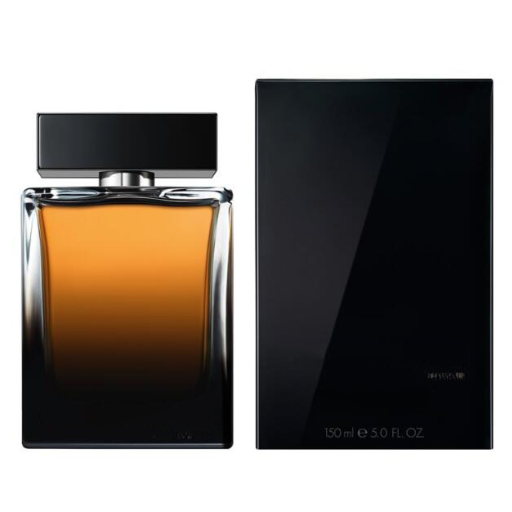
1. Find the Batch Code
Look at the packaging as well as the bottle; the batch code, which comes as a set of numbers or letters, is usually located there. Check that both the box and the bottle contain the same code.
2. Check the Code’s Validity Online
Confirm the details of production and authenticity through trusted batch code checkers or the official site of the brand. Fake items often come with invalid or nonexistent codes attached.
3. Review the Serial Number
The serial number should be observed as it is usually printed on the box, while the bottle is usually engraved or stamped. The serials need to be identical in every detail legible, not blurred or smudged.
4. Check for Uniformity
Perfumes that are not replicas have uniform features, bearing codes and numbers in an ordered sequential manner in line with the brand’s design and standardized placement protocols.
Understanding batch codes and how to decode them
Batch codes are these alphanumeric identifiers stored in their databases, which assist in tracking for login details, and verifying the authenticity of the product. Codes often reveal the time of production, where it was made, and its period of validity. Each brand has a distinctive format of batch coding and thus requires the user to understand the specifics of the system used by the brand of interest.
Decoding a batch code requires first determining its format; some brands opt for simple numeric sets, while others add letters for years or months. With some research, websites and resources focused on interpreting batch codes can serve as excellent cross-referencing tools. For instance, several luxury fragrance houses employ three to four-character batch codes where letters often indicate the year, while numbers represent the month or lot order.
In addition to this, shelf-life knowledge is critical. Most perfumes are usable for up to three to five years from the date of manufacture, which can usually be determined with the help of the batch code. Online checkers streamline the decoding process, however, only verified or well-known sources should be turned to to cross-reference information. Knowing these further aid in understanding product authenticity alongside its freshness and quality.
Using serial numbers to verify whether a perfume is authentic
Perfume serial numbers serve as vital tools for authenticity checks. They are usually marked on the packaging and the bottle which must be identical. Renowned perfume brands have their serial numbers sophisticatedly and consistently marked. Any difference such as poorly matched or awful imprinted numbers can indicate a fake product.
One good option to confirm a fragrance serial number is checking it against sources provided by the brand or through their authorized retailers. Online portals have been established for some prominent perfume brands where clients can obtain confirmation. Authentic serial numbers have a tendency to be engraved or printed with high precision while fakes use glue which causes smudging—something posing as spurious often.
The sale of fake perfumes is on a meteoric rise causing a slump in economy and health concerns. Fake cosmetics and fragrances reported on by industry studies are costing billions annually which calls for a heightened focus on checking authenticity among consumers. One of the most basic yet dependable steps to verify a fragrance is checking the serial number.
What are the differences in scent between real and fake perfumes?
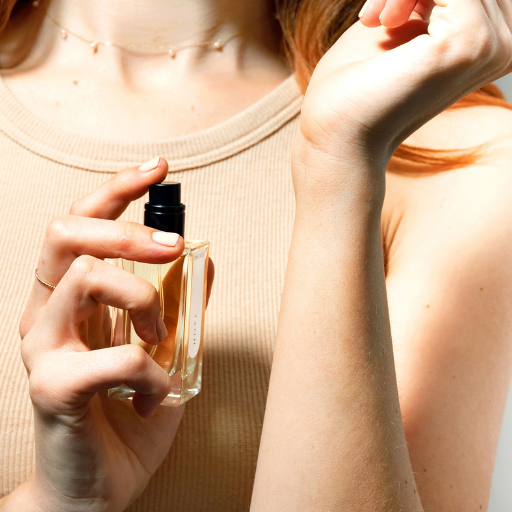
Use of real ingredients results in the best scent balance and alluring aroma which lasts for lengthy periods and does not emit any unpleasant odor. Fake perfumes, on the contrary, have no depth as the inferior ingredients used serve their purpose terribly and the scent becomes too harsh or too faint. Use of fake perfumes also has the effect of not being able to last long, as the scent tends to dissipate fast. It’s easy to discern perfumes based on their quality, how long they last, and how genuine they are.
How counterfeit fragrances differ in quality and longevity
As a result of poor manufacturing practices, counterfeit fragrances are very different from authentic ones based on quality and longevity. With true perfumes, the essential oils and alcohol used are of high quality and properly sourced, allowing them to have a rich and balanced profile. For instance, true fragrances have a lasting time of 8 hours, while counterfeit versions last a mere 2 hours and due to lack of proper ingredients. Research shows fake perfumes have chemicals and water added making them excessively harsh.
One more critical issue of counterfeit perfumes is the possible danger they pose to people’s health. Studies have identified some of these fake products as containing dangerous chemicals such as phthalates, benzyl benzoate, or even skin-allergenic substances. Because there are no strict safety regulations in the making of counterfeit perfumes, these products are bound to have poor stability and shorter shelf life. Apart from scent longevity and health implications, counterfeit fragrances tend to replicate legitimate replicas of the packaging but do not capture the formulation responsible for achieving an authentic enduring pleasant scent. The difference is so glaring that it underscores the need to purchase fragrances only from reputable and trusted vendors.
Identifying fake perfume through scent development over time
Counterfeit perfumes can usually be detected through their peculiar scent and its development over time. True fragrances undergo a complicated creation process, often blending differently over time after being sprayed on the skin, like top notes, middle, and base notes. Authentic perfumes are more complex in nature and become truly distinguishable hours after application. Fakes mostly lack this sophistication and either possess an overpowering scent at first which turns into an unpleasant odor or fickle aroma that fades away completely after a few moments.
For example, genuine perfumes contain a mix of balanced essential oils and fixatives that together help the scent remain strong, unchanging, and enduring on the skin. Research shows how quality perfumes last longer than fake ones, enduring to 12 hours and ranging anywhere from 6-8 for standard brands. Fake perfumes, however, may only last 1-3 hours due to lacking staving components. In addition, scents range with their naturals, harmonizing with one’s body, whereas counterfeits lack this mark of esteem and would likely cause irritation to the nose or cause an imbalance in smell associations. Distinguishing these characteristics helps verify fake perfumes and aid consumers in identifying poor-quality products.
What are the risks of using counterfeit perfume?
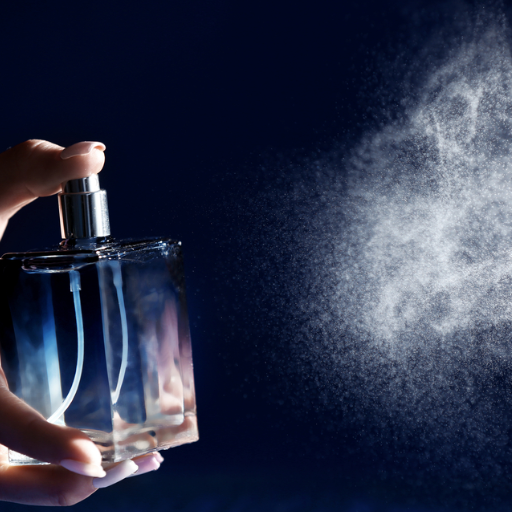
The health effects of using counterfeit perfumes can lead to personal and psychological issues. Counterfeit perfumes can cause skin damage when used because the products contain very dangerous substances. The unsupervised manufacturing of copies of perfumes may incorporate inhalation toxins or materials that can be dangerous when absorbed through the skin. Apart from these, these products also do not stand up to the claim of absolute moisturization. In the absence of hygiene control done during the making, the perfume becomes contaminated. As a health hazard, these products do not add any value as they impersonate super perfumes or counterfeit skin moisturizers that have no vapidity or worth.
Potential allergic reactions and skin irritations
The threat can be anything from mild to severe bronze scars, burns, and pimples to permanent skin damage. Damage must be done to the defiant skin patting it at various rhythms and beats using the fake perfume. Phthalate and benzene derivative compounds have potential evidence from testing claiming they can cause redness, skin blooming, rapid sharp burning sensations, and unexpected swelling. Dermatologists warn of repeated exposure to these very toxic shapes of generic perfumes.
Moreover, clinical studies indicate that counterfeit perfumes may contain undeclared allergens such as cinnamaldehyde or isoeugenol, which heightens the risk for people with existing sensitivities. Recent evidence indicates an increase in dermatological issues associated with the use of fake cosmetics, with skin irritation and allergic reactions emerging as the primary concerns. To protect skin health, experts advise consumers to purchase only from reputable manufacturers who safeguard compliance with regulatory standards on labeled ingredients and their safety.
Harmful ingredients found in fake fragrances
Counterfeit perfumes usually contain a plethora of dangerous chemicals that put users’ health at risk. Certain studies have shown that fake perfumes contain Phytalates, methanol, benzene, and heavy metals such as lead and arsenic. Phytalates for instance are used to preserve fragrance, but they are also known for being endocrine disruptors which means they interfere with the hormonal system. Another example is Methanol, a toxic alcohol, which creates symptoms from dizziness to blindness and death in significant amounts.
As recently estimated around 35% of fragrance imitations contain dangerous levels of benzene which is classified as a carcinogen linked to leukemia and many blood-related diseases. Other dangerous substances include heavy metals leading to the same problems such as fake fragrances. These substances are dangerous or unreputable fragrances, such as lead and arsenic, known for accumulating in the body over time causing problems like nerve disorders, kidney failure, and developmental disorders. These harmful substances are usually ignored in counterfeit items, making them drastically more dangerous for frequent use.
Only purchasing perfumes from verified brands helps mitigate these risks. Every brand has certain criteria they must adhere to when creating beauty products. Confident helps assurance for harmful ingredients that safety standards for genuine products and standards for unsafe goods ensure fewer harmful materials.
How can I identify fake niche and designer perfumes?
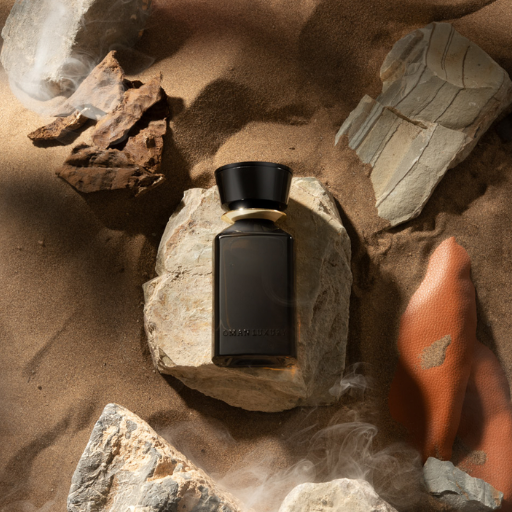
To identify fake niche and designer perfumes, take the following essential steps:
Check the packaging: Authentic perfumes come in high-quality packaging, sealed properly with crisp fonts. Fakes could have spelling errors, inconsistent wrapping, or poor-quality materials.
Check the bottle: Authentic perfumes are poured into well-crafted bottles. Look for uneven glass, poorly aligned caps, and poorly printed labels.
Check the batch and serial numbers: Authentic perfumes come with batch and serial numbers. These numbers should match. If they don’t, that’s a potential sign of a fake.
Test the fragrance: Authentic fragrances are complex and last long, however, fake perfumes tend to have aggressive and artificial smells.
Make purchases from reputable sellers: Guarantees purchasing from a store, authorized retailer, or site branded for the producer eliminate the chance of buying counterfeit products; however, be careful of extremely low prices.
Specific authenticity markers for expensive perfume brands
In costly perfume brands, I first check the packaging details because it indicates authenticity – real brands use elegant materials and their workmanship is meticulous. I check the logo and font on both the box and bottle to ensure there are no discrepancies with the brand’s logos. Even the most minor details are significant to me. Furthermore, I check the batch code and make sure that it corresponds with what the brand’s records say since the details have to match the product’s claims. Last but not least, I rely on the depth and complexity of the fragrance of the perfume because real luxury perfume has clear and distinct high-grade ingredients, unlike counterfeit.
Unique packaging features of authentic niche perfumes
Authentic niche perfumes frequently possess an intricate and elaborate packaging style as a result of distinctive works of craftsmanship. Their perfumes often come in a thick, long-lasting glass or porcelain bottle that is also hand-crafted,. Many brands go a step further with the details, such as the logo which may be engraved on the bottle or the embossed pattern which can be artisanal ensuring that the bottle is unique. Also, niche fragrances tend to have caps that are either magnetic or fit snugly which further enhances quality and precision. Labels and text tend to be printed on the pack using sharp and clear font, other processes to embellish the print involve hot stamping and foil embossing which will give a further premium feel. For verification purposes, both boxes are serial numbered, and holographic seals are added for verification. Analysis shows that the heliograph stickers are part of niche perfume packaging which is authenticated and further shows purposeful care as the packaging puts sustainability first used to cut down plastic waste. All these reasons personalize the product using the bottle as a vehicle while making exquisite art hence ensuring the perfume is protected.
Reference Sources
-
Counterfeit luxury goods online: an investigation of consumer perceptions:
- Investigates consumer perceptions and values associated with purchasing counterfeit goods online.
- Highlights the factors influencing counterfeit purchases, including perfumes, and the implications for consumer behavior.
-
- Explores the attitudes of consumers who repeatedly purchase counterfeit products, including perfumes.
- Discusses the psychological and social factors that drive counterfeit purchases.
-
Luxury brand consumption and counterfeiting: A case:
- Examines consumer behavior related to luxury brand counterfeiting, with perfumes being a frequently purchased counterfeit product.
- Analyzes whether consumer behavior can be influenced to avoid counterfeit purchases.
Frequently Asked Questions (FAQs)
Q: How can I spot a fake fragrance?
A: To spot a counterfeit, carefully inspect the bottle and packaging for signs of a fake perfume. Real perfume shouldn’t have uneven lettering or poor-quality printing. Pay attention to the quality of the perfume box and any inconsistencies around the box.
Q: Why is it important to avoid fake perfume?
A: Avoiding fake perfume is crucial because imitation perfumes are easily manufactured with low-quality ingredients, which can impact your perfume experience and potentially cause allergic reactions.
Q: What are the risks of buying perfume online?
A: When purchasing perfume online, there’s a risk of buying a fake if the seller is not reputable. It’s important to know the source and ensure you are buying the real deal from trusted retailers or official brand websites.
Q: How can I ensure my perfume purchases are authentic?
A: To buy authentic perfumes, always buy from trusted retailers, such as a department store or the brand’s official website. Avoid buying from unauthorized sellers or flea markets.
Q: What are common signs of a fake perfume?
A: Common signs include poor bottle construction, a mismatch between the scent and the known profile of the perfume, and unusually low prices. The real perfume shouldn’t have these discrepancies.
Q: What impact does buying a fake perfume have on the industry?
A: Buying fake perfumes undermines the fragrance industry, affecting both the economy and the brand’s reputation. It can lead to financial losses and discourage innovation and quality in perfume production.
Q: How can I avoid buying fake perfumes?
A: The best way to avoid buying fake perfumes is by purchasing expensive perfume only from official stores or directly from the brand. Pay attention to the authenticity of the packaging and the quality of the scent.
Q: Are there any specific places I should avoid when buying perfume?
A: To avoid buying fake perfume, steer clear of unverified online marketplaces, flea markets, and street vendors where imitation perfumes are more likely to be sold.
Q: Why is knowing how to spot fake perfumes important?
A: Knowing how to spot a counterfeit helps you avoid buying a fake perfume and ensures you get the quality and scent you expect, preserving your perfume experience.
Q: What should I do if I suspect the perfume I purchased is not authentic?
A: If you suspect a perfume isn’t authentic, contact the seller for a refund or exchange. You can also report the issue to the brand or the marketplace where you made the purchase, helping to prevent further buying and selling of counterfeit products.

